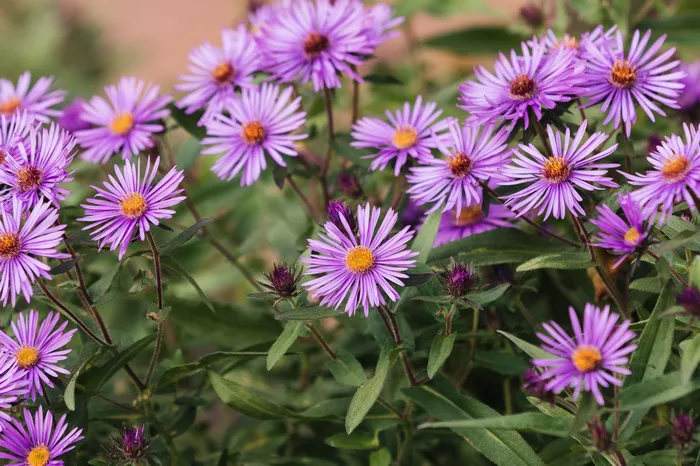Asters, with their vibrant colors and delicate petals, are a favorite among gardeners and flower enthusiasts alike. These charming flowers, belonging to the Asteraceae family, come in a variety of hues ranging from vibrant purples and pinks to soft blues and whites. Their daisy-like appearance adds a touch of elegance to any garden or floral arrangement. However, as with all blooms, asters eventually wilt and fade. But fear not! With the right techniques, you can preserve the beauty of aster flowers long after they’ve been cut. In this comprehensive guide, we’ll explore the factors influencing the drying process of aster flowers, various methods of drying, and invaluable tips to ensure successful preservation.
Understanding the Factors Influencing Drying Effect
Before delving into the methods of drying aster flowers, it’s essential to grasp the factors that affect the drying process. By understanding these variables, you can tailor your approach to achieve optimal results.
Environmental Conditions: The environment plays a crucial role in the drying process. Low humidity levels and good air circulation facilitate faster drying. Conversely, high humidity can prolong the drying time and increase the risk of mold or mildew formation.
Maturity of Flowers: Selecting asters at the right stage of maturity is key to successful drying. Choose flowers that are fully open but not overly mature or beginning to wilt. Flowers in prime condition will retain their color and shape better during the drying process.
Temperature: Moderate temperatures are ideal for drying aster flowers. Excessive heat can cause the petals to become brittle and lose their color, while cold temperatures may slow down the drying process.
Preparation: Proper preparation of aster flowers before drying is essential. Remove any foliage that may come into contact with the drying agents, as this can lead to discoloration or decay. Additionally, trimming the stems at an angle helps improve water absorption and prolongs the flowers’ freshness.
Methods of Drying Aster Flowers
There are several methods available for drying aster flowers, each offering unique advantages. Experimentation with different techniques can help you find the method that best suits your preferences and resources.
1. Air Drying:
Air drying is one of the simplest and most traditional methods of preserving flowers. To air dry aster flowers, gather them into small bunches and secure the stems with a rubber band or twine. Hang the bunches upside down in a well-ventilated, dry area away from direct sunlight. The flowers will gradually dry over a period of one to three weeks, depending on environmental conditions.
2. Silica Gel Drying:
Silica gel is a desiccant commonly used for drying flowers. This method offers the advantage of preserving the flowers’ color and shape more effectively than air drying. Fill a container with silica gel and bury the aster flowers gently, ensuring that the petals are not crushed. Seal the container and allow the flowers to dry for several days to a week. Once dried, carefully brush off any excess silica gel.
3. Pressing:
Pressing is a popular method for drying delicate flowers like asters while preserving their natural appearance. To press aster flowers, place them between sheets of absorbent paper, such as blotting paper or parchment paper. Place the paper with the flowers inside a heavy book or flower press, ensuring even pressure. Leave the flowers to press for two to four weeks, replacing the paper periodically if it becomes damp.
4. Microwave Drying:
Microwave drying is a quick and efficient method suitable for small batches of flowers. Place the aster flowers between layers of paper towels, ensuring they are not touching. Microwave on low power for short intervals, checking frequently to prevent overheating. Once dried, allow the flowers to cool before handling.
Tips for Drying Aster Flowers
Achieving optimal results when drying aster flowers requires attention to detail and proper execution. Here are some invaluable tips to ensure success:
Select Fresh Flowers: Begin with fresh, healthy aster flowers free from blemishes or signs of decay. Flowers in prime condition will yield the best results when dried.
Choose the Right Method: Consider factors such as time constraints, available resources, and desired outcome when selecting a drying method. Experiment with different techniques to find what works best for you.
Handle Flowers Gently: Handle aster flowers with care to avoid damaging delicate petals or stems. Gentle handling minimizes bruising and ensures the flowers retain their natural beauty.
Monitor Progress: Regularly check on the drying process to assess progress and make any necessary adjustments. Environmental conditions may fluctuate, affecting drying times and outcomes.
Store Dried Flowers Properly: Once dried, store aster flowers in a cool, dry place away from direct sunlight to prevent fading or deterioration. Proper storage prolongs the flowers’ lifespan and maintains their appearance.
Conclusion
In conclusion, drying aster flowers allows you to preserve their beauty and enjoy them for months to come. By understanding the factors influencing the drying process, exploring different drying methods, and following valuable tips, you can successfully dry aster flowers with stunning results. Whether you prefer the simplicity of air drying or the precision of silica gel drying, the key lies in patience, attention to detail, and a love for preserving nature’s treasures.


